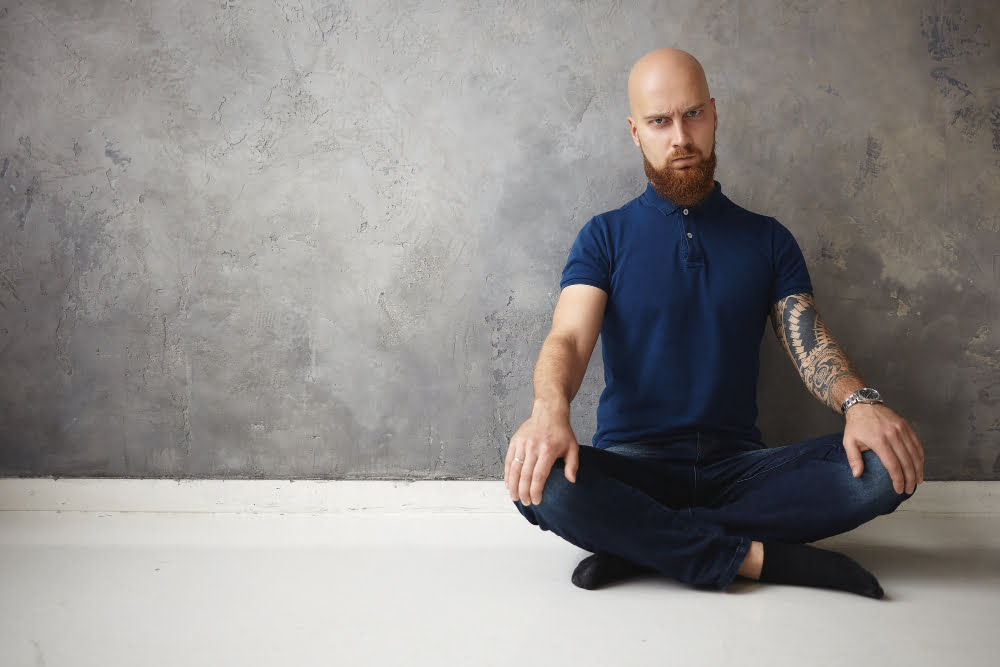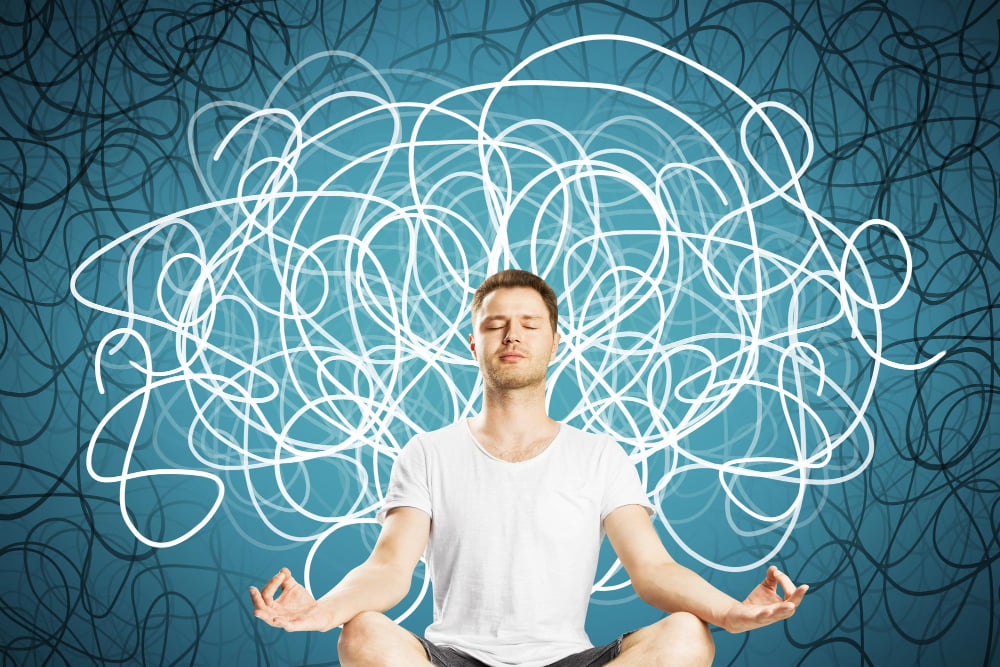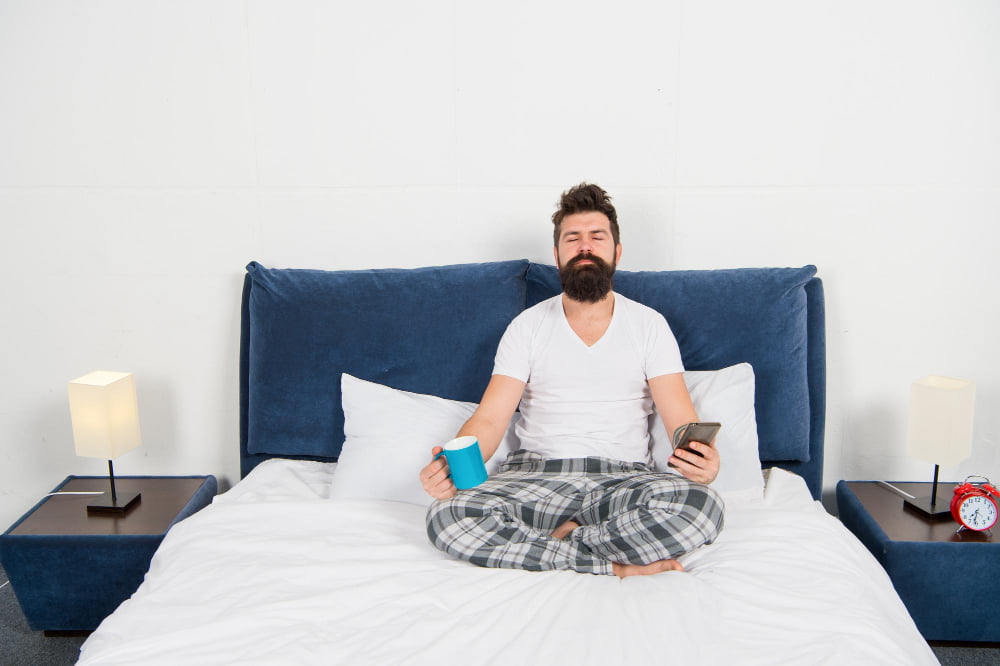You may struggle with meditation due to a lack of focus, understanding, patience, or inconsistent habits, but with diligent practice, these obstacles become less daunting.
Often, the question isn’t “why can’t I meditate?” but rather “how can I meditate correctly?”
It’s important to understand that meditation isn’t about emptying the mind or achieving a state of eternal calm.
Instead, it’s about focusing and quieting your mind, eventually reaching a higher level of awareness and inner calm.
Struggles with meditation typically stem from misconceptions, lack of proper techniques, or certain mental barriers.
This article will guide you through these common challenges, offering practical strategies and insights to enhance your meditation experience.
By delving into the root causes of your struggles and providing solutions, you’ll soon realize that you can, in fact, meditate effectively.
Key takeaways:
- Lack of consistency in practice
- Psychological resistance to inner silence
- Perceived lack of time for meditation
- Misconceptions about what meditation entails
- Physical discomfort while sitting still
Reasons You Can’t Meditate

Not being able to meditate stems from a variety of factors:
- Lack of Consistency: Meditation requires regular practice. A sporadic approach might not yield the desired result.
- Psychological Resistance: It’s common to resist inner silence, especially when you’re new to meditation.
- Perceived Lack of Time: The perception that meditation is a time-consuming process can prevent one from starting.
- Misconception About Meditation: Many believe you must completely eliminate thought during meditation, which isn’t true.
- Physical Discomfort: Sitting still in a meditation pose can be uncomfortable for some, leading to a struggle sitting for longer periods.
Recognizing these hindrances can be the first step towards a successful and rewarding practice.
The Challenge of Having Too Much On Your Mind

Entering a meditative state can be an uphill battle with a mind brimming with thoughts. It’s akin to attempting to swim across a tumultuous river. The trick here is to leaven your swirling thoughts without actively attempting to clear your mind. Acknowledge these thoughts as they arise and let them float by, akin to clouds in the sky. Gradually, their intensity will fade away.
Incorporating practices such as focusing on your breath or reciting a mantra can also be beneficial in directing your mind away from disruptive thoughts.
Worries About Not Meditating Correctly

It’s not uncommon to worry if you’re ‘doing it right’. The perception of mastering a meditation technique can sometimes create anxiety. Understand, there is no perfect way to meditate; it’s a personalised practice.
Remind yourself that meditation isn’t about controlling your thoughts, it’s about allowing them to pass. Second, there’s no ‘successful’ or ‘unsuccessful’ meditation session. Even a moment of calmness counts.
Lasty, consistency and practice make a significant difference. Let your meditation journey be an exploration rather than a task to perfect.
Inadequacy of Meditation Environment

In an ideal world, peace and serenity would automatically present themselves at the onset of meditation. However, the truth is, your surroundings can significantly impact your ability to focus and enter a meditative state. A chaotic or noisy environment can stifle your meditation apathy.
Consider these factors when choosing your meditation area:
- Tranquility: Choose a location that is far from interruptions like television noise, family bustle, or street sounds.
- Comfort: Opt for a spot where you feel at ease and secure. It could be your bedroom, your terrace, or even your garden.
- Minimalism: An uncluttered space can help to clear your mind. Try to keep your meditation space free from distractions, such as clutter or strong odors.
- Personalization: Add elements that evoke calmness – it can be a potted plant, a candle, or an object of personal significance.
Remember, the goal is to create a space that helps to encourage a peaceful state of mind.
The Difficulty of Dealing With Numerous Thoughts During Meditation

Thoughts can be relentless and persistent, intruding into your tranquil moments. It’s part of human nature. Your brain is a problem-solving machine, continuously working even when you are trying to quiet it down. Yes, meditation involves quieting the mind, but be prepared, your mind may rebel initially.
Here are some points to consider:
- Recognise the Thoughts: You’re not aiming for an absolute clear state of mind, it’s more about bringing calmness to the chaos. Think of the mind as a busy highway. Your job is to sit back, watch the traffic, without getting involved.
- Regard Them as Clouds: The cloud analogy assists in dealing with intrusive thoughts. Just like clouds, thoughts come and go. Observe them without judgment, let them drift across your mind.
- Don’t Force Negativity Away: Abstain from pushing negative thoughts away. Instead, acknowledge them, and then gently redirect your focus back to your breath, mantra, or whatever your meditation focus is.
- Used Guided Practices: A guided meditation can steer your mind away from an overload of thoughts. It essentially helps you focus on a voice or a story than internal chatter.
Remember, meditation is not about completely emptying your mind, but mastering the art of focusing on one thing at a time. It’s about finding stillness amidst the buzz. In this practice, patience is key.
Inappropriate Expectation of Immediate Results From Meditation

It’s natural to yearn for the significant benefits of meditation, such as increased focus, reduced stress, and heightened self-awareness. However, these profound effects usually come with consistent practice over a period of time. Your progress may seem slow in the beginning, this is completely normal. Meditation is a journey, not a destination.
Points to consider:
- 1. Meditation is not a quick fix: It’s a lifestyle shift for gradual improvement in mental health.
- 2. Astrological numbers game: Just like stars don’t align overnight, improvements through meditation take time.
- 3. Slow and steady growth: The more you practice, the better you get. Be patient.
- 4. Ditch the stopwatch: Focus on the quality of your meditation, not the elapsed time.
- 5. Meditate daily: Make meditation a regular habit for sustained improvements.
- 6. Set realistic goals: Be kind to yourself and celebrate small victories along the way.
- 7. Benefits are not always obvious: Sometimes the benefits are subtle and not immediately noticeable.
Pressure of Experiencing Specific Feelings During Meditation

Understanding the pressure exerted by preconceived notions of what to feel during meditation is a crucial step in enhancing your practice. This perceived obligation to attain a certain state of consciousness can be a barrier.
1. Authenticity: Each person’s meditation experience is unique. Don’t let anyone define what it should feel like for you.
2. Non-judgemental Attitude: Meditation is not a test. Being open to whatever you feel in each session can strengthen your practice.
3. Patience: Like learning any new skill, the ability to meditate can take time to develop. Harmonious feelings may come gradually, not overnight.
4. Trust in the Process: Your journey toward peace and mindfulness may be longer than you expect, but rest assured, each step takes you closer.
Dismissing the pressure to experience specific feelings will transform your meditative journey into a more pleasant and fruitful endeavor.
Importance of Finding Your Ideal Meditation Method

Everyone is unique, and this applies even to meditation. Some people find peace in silence, while others may prefer a guided process. Experimenting with different methods can be beneficial.
Sitting, laying down, zen walking, or a combination of these methods may work best for certain individuals. The use of aids, such as music, imagery, or mindfulness apps, can also be explored for those who find it hard to meditate in total silence. The choice of locations can be crucial too; indoors, outdoors, a quiet room, or a bustling park, it all depends on personal preferences.
The objective is to make the experience comfortable, stress-free and enjoyable. Some might discover that group meditation class suits them more, while others might feel intense bliss while meditating alone. The key is to understand there is no one-size-fits-all in the realm of meditation. You are allowed to explore, change, and improvise until you discover your personalized meditation way.
Necessity of Eliminating Distractions

Distractions play a significant role when attempting to meditate. The environmental noise around you can break your concentration, hindering your ability to reach a tranquil state. Being proactive in controlling these disruptions can effectively enhance your meditation experience.
1. Designate a specific, quiet space for your meditation practice. This place should be clean, decluttered, and peaceful.
2. Switch off electronic devices, or at least put them on silent mode. Postpone checking emails, texts, or social media during this time, to give your mind a break from constant digital interaction.
3. Consider using noise-cancelling earphones or a white noise machine to block out background noise.
4. If you’re meditating in a room with windows, use thick curtains to keep out unnecessary light and sound.
5. Inform family members or roommates about your meditation schedule to reduce the chance of disruption.
Best Time for Meditation: Mornings

Adopting the morning for your mediation rituals can play a pivotal role in improving your experience. Here’s why:
1. Established Routine: Morning meditation fosters a structured routine. It sets a serene tone for the day, inviting a calm approach to daily challenges.
2. Minimal Distractions: In the mornings, the world is generally quieter. Fewer distractions allow for a more focused session.
3. Enhanced Focus: After a good night’s sleep, your mind is naturally fresher and more focused, making it easier to engage in mindfulness.
4. Greater Consistency: Tackling meditation first thing helps to ensure it becomes a fixed part of your daily schedule.
Remember, while mornings are a prime time, the essential thing is to select a time that supports consistent practice.
Employing 5-Minute Quiet-Time Drills Prior to Meditation

Starting your meditation practice with a 5-minute silent drill can be a game changer. Begin by sitting comfortably, preferably in a serene setting, bringing your attention to your breath. Concentrate on the sensation of air entering and leaving your nostrils. If your mind wanders, gently bring your focus back to your breath.
This preliminary step serves a few key purposes:
- 1. It shifts your focus from the external clutter to your internal environment, preparing your mind for the deeper meditative state.
- 2. Nurturing a non-judgmental awareness of your thoughts during this period can give you valuable insights into your mental patterns. This understanding can help during longer meditative practices.
- 3. It serves as a warm-up for your brain, priming it for better concentration during the actual meditation. Like athletes warm-up before a game, these drills can help to enhance the efficiency of your meditation sessions.
- 4. It aids in developing a habit-forming routine. Consistently practicing these 5-minute drills can make the transition to longer durations of meditation smoother.
By building this bridge between your routine life and meditative sessions, you are empowering your mind to better navigate the journey inward. Remember, the aim is not to have an empty mind, but an aware one.
FAQ
Why is it so hard for me to meditate?
The difficulty in meditating often stems from stress which can instigate distracting thoughts, feelings of restlessness, and consequently, impair the ability to maintain a steady meditation practice.
Why some people Cannot meditate?
People sometimes struggle with meditation due to a misunderstanding about its nature, insofar as they wrongly assume it involves fighting thoughts or forcibly emptying the mind, instead of simply observing thoughts come and go without attachment.
Why does meditation not work on me?
The effectiveness of meditation can be impeded by inconsistent practice, therefore, maintaining a regular daily meditation routine is pivotal to reap the desirable benefits.
Is it hard to meditate with ADHD?
Yes, it is more challenging to meditate with ADHD due to symptoms like difficulty sitting still, trouble focusing, time blindness, and ADHD hyperfixation.
Can physical conditions impede meditation efforts?
Yes, certain physical conditions such as chronic pain, physical discomfort, or respiratory problems can make it difficult to focus during meditation.
How does mental health impact one’s ability to meditate?
Mental health profoundly influences one’s capacity to meditate as conditions like anxiety, depression, and stress can disrupt focus and relaxation, yet regular meditation practices can also potentially alleviate some of these symptoms.
What roles do environmental factors play in unsuccessful meditation attempts?
Environmental factors, such as noise, disruptive surroundings, or physical discomfort, can lead to unsuccessful meditation attempts by hindering one’s ability to fully concentrate and relax.